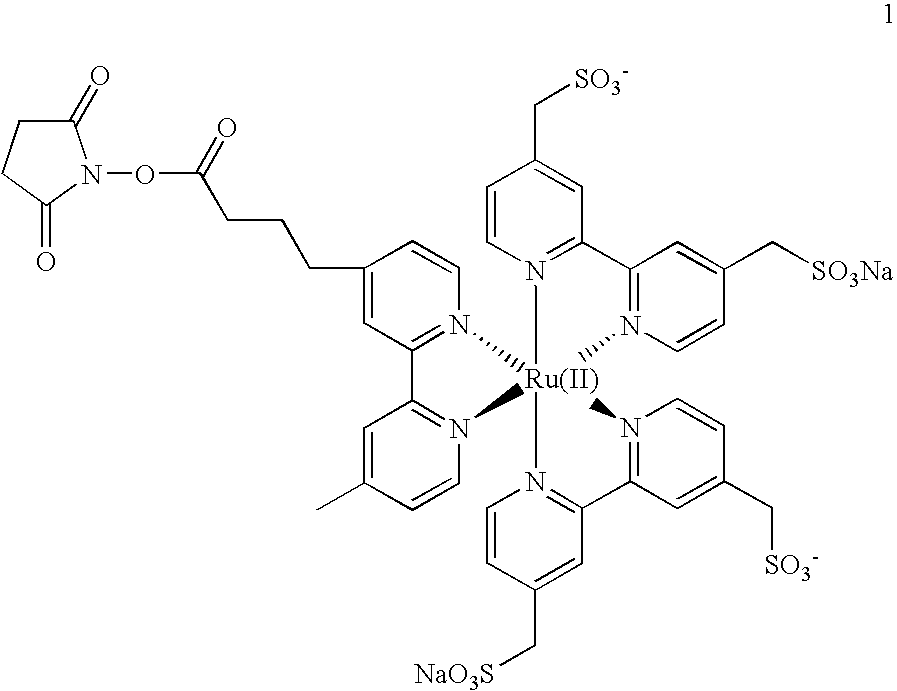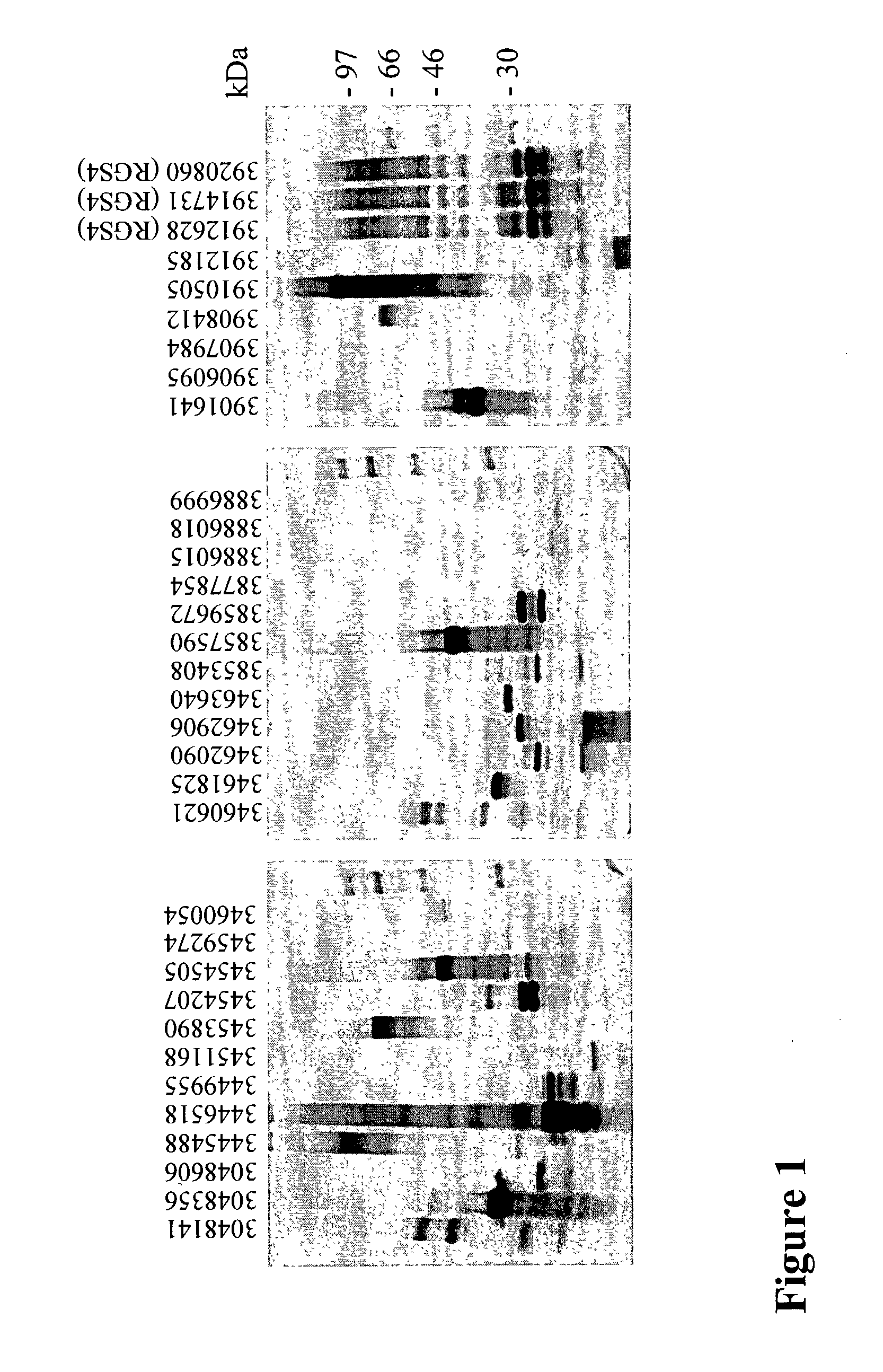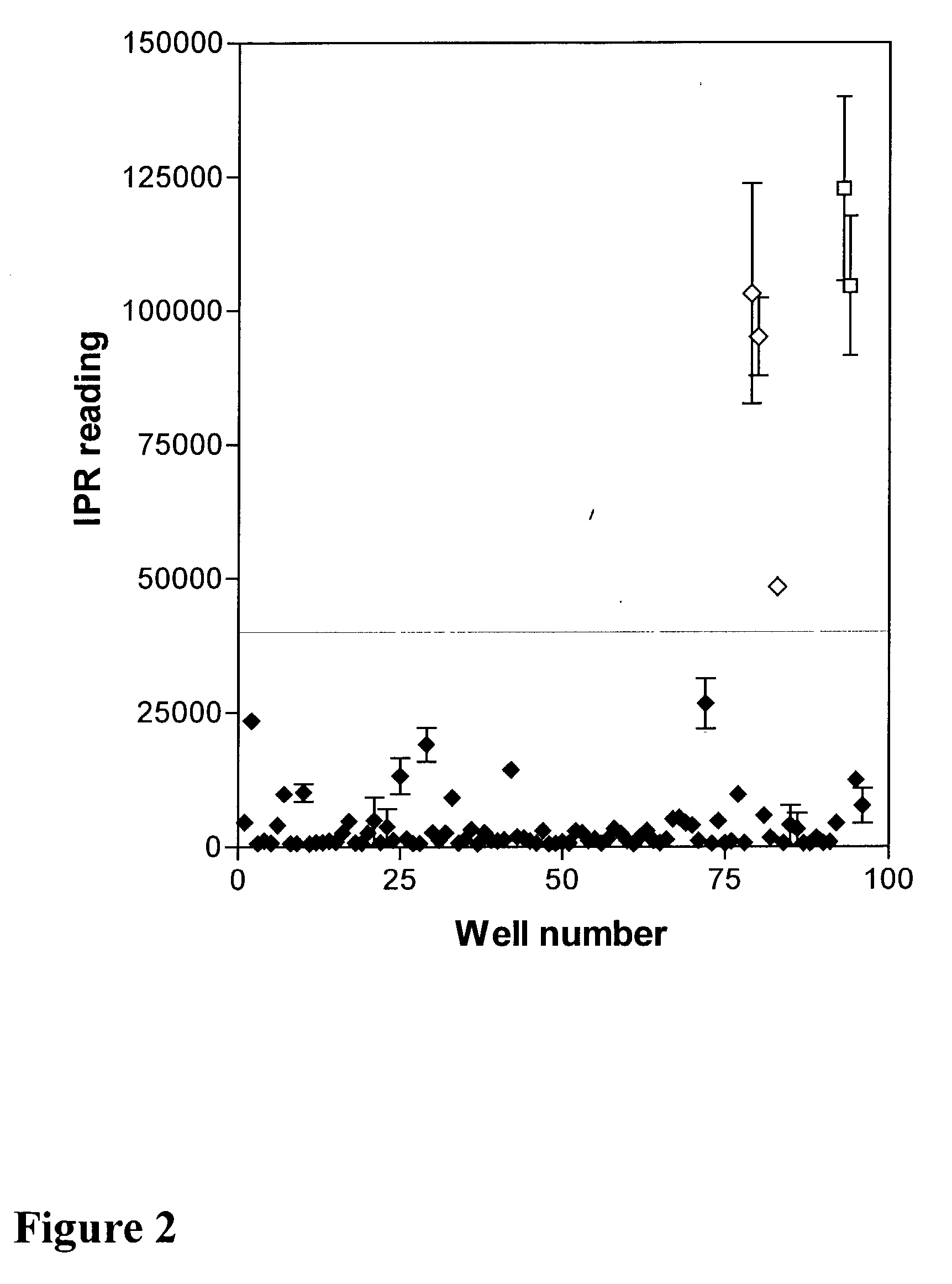Methods, reagents, kits and apparatus for protein function analysis
a protein function and kit technology, applied in the field of methods, reagents, kits and apparatuses for protein function analysis, can solve the problems of complex overall process, difficult system work, and difficulty in protein function and activity analysis
- Summary
- Abstract
- Description
- Claims
- Application Information
AI Technical Summary
Problems solved by technology
Method used
Image
Examples
example 1
ECL Assay for Ubiquitylation of RGS4 in Reticulocyte Lysates using Sulfo TAG.TM.-Labeled Ub
[0156] The example demonstrates the detection of ubiquitylated proteins produced by in vitro translation by adding labeled ubiquitin in the translation reaction.
[0157] The following experiment describes detection and measurement of ubiquitylation of RGS4 (Regulator of G-protein signaling 4), a previously described substrate of a subset of the ubiquitin-proteasome system, called the N-end rule pathway (Davydov and Varshavsky, 2000, J. Biol. Chem., 275:22931-22941).
[0158] RGS4 was produced by transcription / translation of 30 .mu.g / ml plasmid pcDNA3-RGS4 (Davydov and Varshavsky, 2000, J. Biol. Chem., 275:22931-22941) under the conditions described in Materials and Methods except for the addition of 1 .mu.M Ub aldehyde (Calbiochem, to inhibit deubiquitylating enzymes) and 5 .mu.M Sulfo-Tag-labeled Ub (having an average of 4.1 labels per Ub molecule). Then 3 .mu.l of the reaction was mixed with 50 ....
example 2
ECL Assay for Ubiquitylation of RGS4 using Sulfo-TAG Labeled Streptavidin and IPR Plate Coated with FK2 Antibody
[0160] The example demonstrates detection of ubiquitylated proteins produced by in vitro translation, using immobilized antibodies able to bind the ubiquitin post-translational modification.
[0161] Transcription-translation reaction mixtures were prepared as described in the Example 1 except that no labeled ubiquitin was added. Some reactions also contained 1 mM dipeptide inhibitor of the N-end rule pathway (either Arg-.beta.-Ala, or Trp-Ala) together with 50 .mu.M bestatin as indicated (Table 2). The reaction was allowed to proceed for 20 min at 30.degree. C. Then 1 .mu.l of the reaction was mixed with 50 .mu.l of BB1 supplemented with 20 mM AMP-PNP, 20 mM N-ethylmaleimide, and 2 .mu.g / ml Sulfo-TAG-labeled streptavidin in a well of an IPR plate coated with an anti-ubiquitin antibody (FK2 antibody, Affiniti). The plate was left on a tabletop shaker for 1 hour to allow for u...
example 3
ECL Assay for Ubiquitylation of RGS4 using Sulfo-TAG-Labeled FK2 Antibodies and Streptavidin-Coated IPR Plate
[0162] The example demonstrates detection of ubiquitylated proteins produced by in vitro translation, using labeled antibodies specific to the Ub post-translational modification.
[0163] The protein was prepared as described Example 2 and mixed with 60 .mu.g / ml Sulfo-TAG-labeled FK2 antibody (Affiniti) having 5.6 labels per antibody, in a streptavidin-coated NPT IPR plate. The plate was left on a tabletop shaker for 1 hour to allow for biotinylated proteins to bind to the surface of the plate and for the antibody to bind to ubiquitylated proteins. Thereafter the plate was washed three times with PBS followed by the addition of 100 .mu.l of ORIGEN assay buffer (IGEN International, Inc., Gaithersburg Md.) into each well, and ECL signals were measured using an imaging plate (See, Example 1).
[0164] In a typical assay the presence of RGS4-encoding plasmid produced a 15-30 fold highe...
PUM
| Property | Measurement | Unit |
|---|---|---|
| dissociation constants | aaaaa | aaaaa |
| dissociation constants | aaaaa | aaaaa |
| dissociation constants | aaaaa | aaaaa |
Abstract
Description
Claims
Application Information
 Login to View More
Login to View More - R&D
- Intellectual Property
- Life Sciences
- Materials
- Tech Scout
- Unparalleled Data Quality
- Higher Quality Content
- 60% Fewer Hallucinations
Browse by: Latest US Patents, China's latest patents, Technical Efficacy Thesaurus, Application Domain, Technology Topic, Popular Technical Reports.
© 2025 PatSnap. All rights reserved.Legal|Privacy policy|Modern Slavery Act Transparency Statement|Sitemap|About US| Contact US: help@patsnap.com



